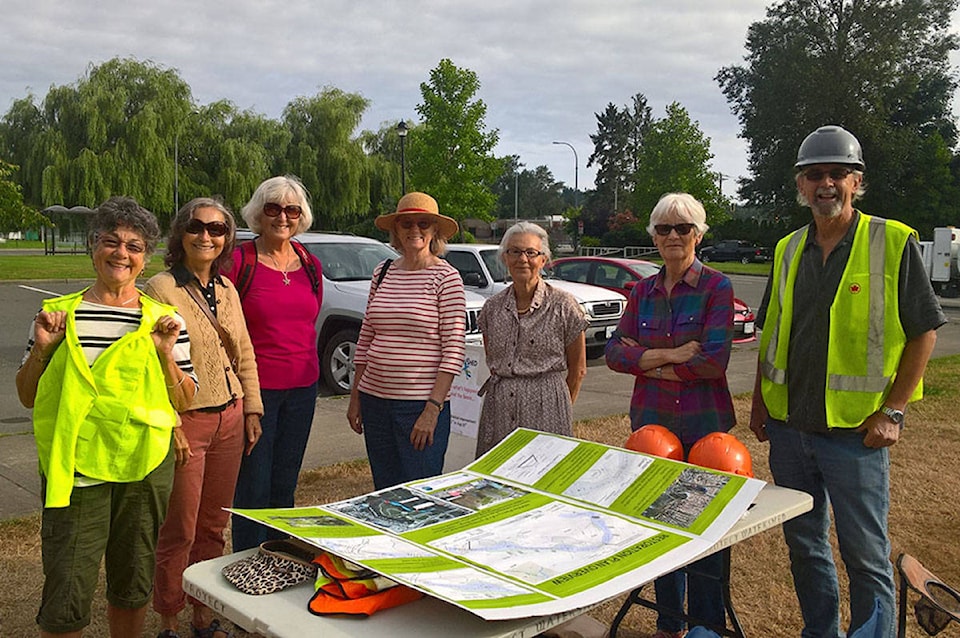Local residents who use Simms Millennium Park will notice some significant changes since Project Watershed completed salmon habitat improvement work in the park this summer. During the month of August the Project Watershed team completed the construction phase of the project, which has been many years in the planning. The endeavour included the removal of an old culvert connecting the Courtenay River through the park into an inner pond area. This culvert was replaced with a larger fish-friendly culvert installed at a lower elevation so that fish would have more access during a variety of tide cycles.
The old culvert flowed around 18 per cent of the time during an average tide cycle. Now the area will be inundated by the tide and river flows, and hence accessible by fish, almost 80 per cent of the time. In addition, another large culvert was installed at the end of the inner pond that connects through to the Courtenay Slough. This installation of the two culverts created a true flow through channel and has completely changed the hydrology of the area, resulting in improved circulation and flushing which has led to better water quality. This change in hydrology should also help to keep out invasive bull frogs, which were found in the area at the start of the project.
The Simms channel is one of only three areas of off-channel habitat along the Courtenay River where young fish can rear. As part of the enhancement, two new deep pools have been created, and large woody debris and rock place to ensure fish refuge and cover during low tides and river flows. A side benefit of the project is that it may allow adult salmon that are returning to spawn an opportunity to escape predation by seals along this section of the river.
“Already adult pink and coho salmon as well as a school of trout have been observed moving through the culverts and using the Simms channel,” said Jennifer Sutherst.
“The project was completed on time and on budget by the Project Watershed team,” stated technical director Dan Bowen. “In addition to our team there were many others that helped us achieve a successful outcome. Volunteers from the community helped salvage fish from the area before the start of construction, and were also on hand to keep the public out of the active work zone during construction and explain the project objectives to those interested. The K’ómoks First Nation Guardian Watchman and their summer students helped with site preparation and the City of Courtenay Parks staff provided tremendous professional support throughout the project. Of course the project could not have been brought to fruition without the financial support of the Fish and Wildlife Compensation Program, Fisheries and Oceans Canada and the Habitat Conservation Trust Foundation.”
As part of the project some alder trees had to be removed and the area re-contoured to allow equipment access to the site; these trees will be replaced with native conifers. Other native trees, plants and shrubs will be planted at the site this fall. To volunteer for the planting effort, connect with Project Watershed at www.projectwatershed.ca
Look for some new interpretive signage at the park explaining the project in the spring. All in all this project was a great team effort and has enhanced this local community asset for fish, wildlife and the public.
